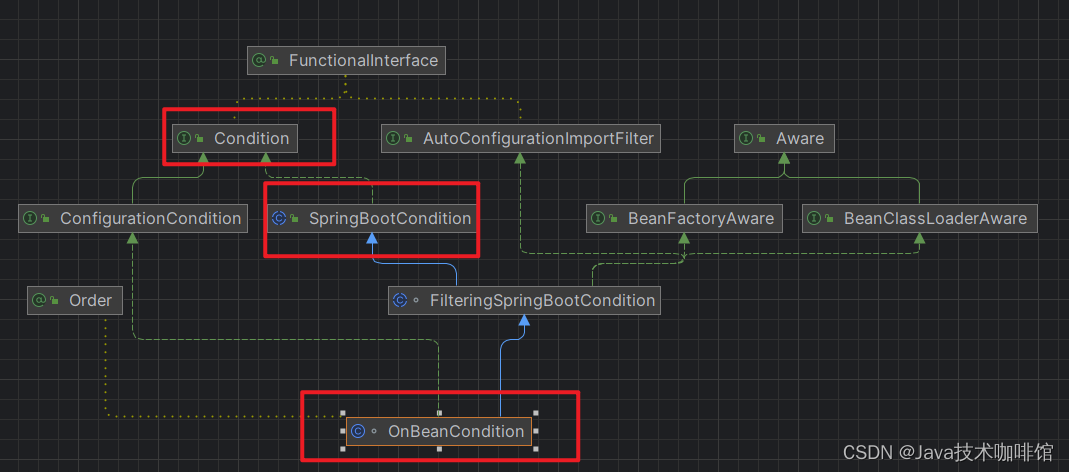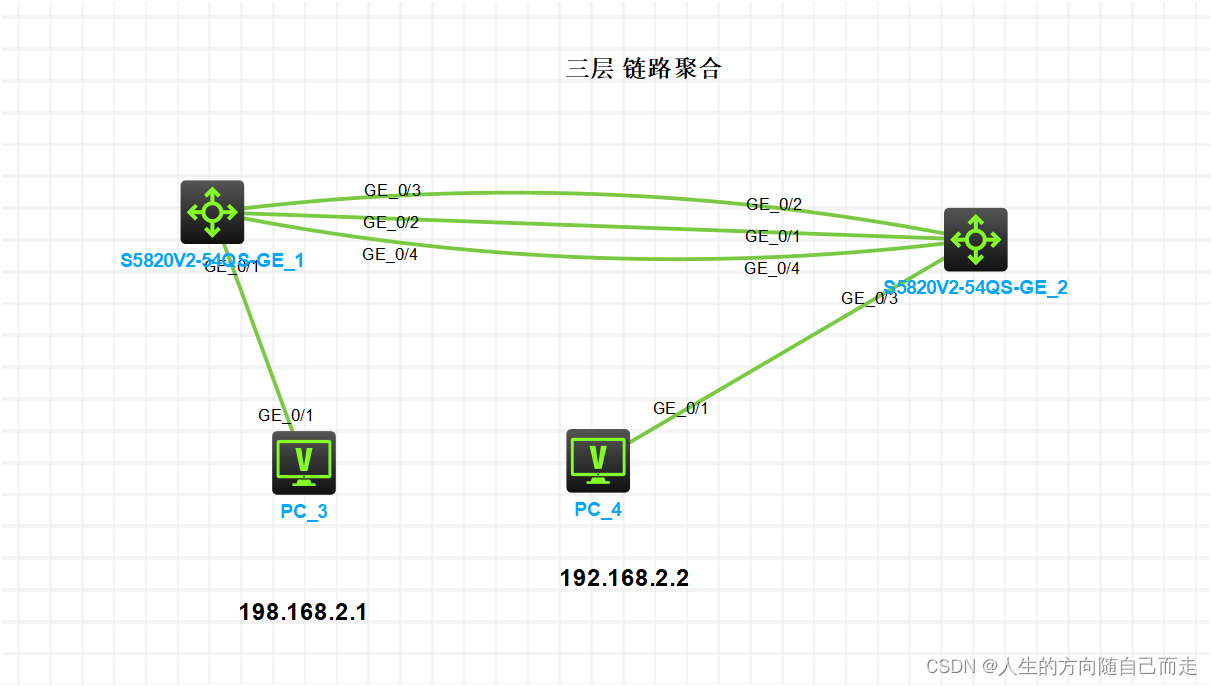1、应用
生物化学:分子指纹识别、药物分子设计、疾病分类等
交通领域:对交通需求的预测、对道路速度的预测
计算机图像处理:目标检测、视觉推理等
自然语言处理:实体关系抽取、关系推理等
2、数据集介绍
CORA数据集由2708篇论文,及它们之间的引用关系构成的5429条边组成。这些论文被根据主题划分为7类,分别是神经网络、强化学习、规则学习、概率方法、遗传算法、理论研究、案例相关。每篇论文的特征是通过词袋模型得到的,维度为1433,每一维表示一个词,1表示该词在这篇文章中出现过,0表示未出现。
- ind.cora.x -> shape(140,1433) 训练集节点特征向量
- ind.cora.tx -> shape(1000,1433) 测试集节点特征向量
- ind.cora.allx -> shape(1708,1433) 有标签和无标签的训练节点特征向量
- ind.cora.y -> shape(140,7) 训练集节点标签 【one-hot编码】
- ind.cora.ty -> shape(1000,7) 测试集节点标签【one-hot编码】
- ind.cora.ally -> shape(1708,7) 【one-hot编码】
- ind.cora.graph 节点之间边的信息
- ind.cora.test.index 测试集索引
3、案例
3.1 GCN
import scipy.sparse as sp
import torch
import torch.nn as nn
import torch.nn.functional as F
import torch.nn.init as init
import torch.optim as optim
import matplotlib.pyplot as plt
from collections import namedtuple
import os.path as osp
import pickle
import urllib
import os
import itertools
import numpy as np
Data = namedtuple('Data',['x','y','adjacency',
'train_mask','val_mask','test_mask'])
#数据集
class CoraData(object):
"""
通过网址下载cora数据集
"""
download_url = "https://github.com/kimiyoung/planetoid/raw/master/data"
# download_url = "https://raw.githubusercontent.com/kimiyoung/planetoid/master/data"
filenames = ["ind.cora.{}".format(name) for name in
['x', 'tx', 'allx', 'y', 'ty', 'ally', 'graph', 'test.index']]
def __init__(self, data_root="cora", rebuild=False):
"""包括数据下载、处理、加载等功能
当数据的缓存文件存在时,将使用缓存文件,否则将下载、处理,并缓存到磁盘
Args:
-------
data_root: string, optional
存放数据的目录,原始数据路径: {data_root}/raw 缓存数据路径: {data_root}/processed_cora.pkl
rebuild: boolean, optional
是否需要重新构建数据集,当设为True时,如果缓存数据存在也会重建数据
"""
self.data_root = data_root
save_file = osp.join(self.data_root, "processed_cora.pkl")
if osp.exists(save_file) and not rebuild:
print("Using Cached file: {}".format(save_file))
self._data = pickle.load(open(save_file, "rb"))
else:
# self.maybe_download()
self._data = self.process_data()
with open(save_file, "wb") as f:
pickle.dump(self.data, f)
print("Cached file: {}".format(save_file))
@property
def data(self):
"""返回Data数据对象,包括x, y, adjacency, train_mask, val_mask, test_mask"""
return self._data
def maybe_download(self):
save_path = os.path.join(self.data_root, "raw")
for name in self.filenames:
if not osp.exists(osp.join(save_path, name)):
self.download_data(
"{}/{}".format(self.download_url, name), save_path)
@staticmethod
def download_data(url, save_path):
"""数据下载工具,当原始数据不存在时将会进行下载"""
if not os.path.exists(save_path):
os.makedirs(save_path)
data = urllib.request.urlopen(url)
filename = os.path.split(url)[-1]
print(save_path,filename)
with open(os.path.join(save_path, filename), 'wb') as f:
f.write(data.read())
return True
def process_data(self):
""" 处理数据,得到节点特征和标签,邻接矩阵,训练集、验证集以及测试集
"""
print("Process data ...")
_, tx, allx, y, ty, ally, graph, test_index = [self.read_data(
osp.join(self.data_root, "raw", name)) for name in self.filenames]
train_index = np.arange(y.shape[0])
val_index = np.arange(y.shape[0], y.shape[0] + 500)
sorted_test_index = sorted(test_index)
x = np.concatenate((allx, tx), axis=0)
y = np.concatenate((ally, ty), axis=0).argmax(axis=1)
x[test_index] = x[sorted_test_index]
y[test_index] = y[sorted_test_index]
num_nodes = x.shape[0]
train_mask = np.zeros(num_nodes, dtype=np.bool_)
val_mask = np.zeros(num_nodes, dtype=np.bool_)
test_mask = np.zeros(num_nodes, dtype=np.bool_)
train_mask[train_index] = True
val_mask[val_index] = True
test_mask[test_index] = True
adjacency = self.build_adjacency(graph)
print("Node's feature shape: ", x.shape)
print("Node's label shape: ", y.shape)
print("Adjacency's shape: ", adjacency.shape)
print("Number of training nodes: ", train_mask.sum())
print("Number of validation nodes: ", val_mask.sum())
print("Number of test nodes: ", test_mask.sum())
return Data(x=x, y=y, adjacency=adjacency,
train_mask=train_mask, val_mask=val_mask, test_mask=test_mask)
@staticmethod
def build_adjacency(adj_dict):
"""根据邻接表创建邻接矩阵"""
edge_index = []
num_nodes = len(adj_dict)
for src, dst in adj_dict.items():
edge_index.extend([src, v] for v in dst)
edge_index.extend([v, src] for v in dst)
# 由于上述得到的结果中存在重复的边,删掉这些重复的边
edge_index = list(k for k, _ in itertools.groupby(sorted(edge_index)))
edge_index = np.asarray(edge_index)
adjacency = sp.coo_matrix((np.ones(len(edge_index)),
(edge_index[:, 0], edge_index[:, 1])),
shape=(num_nodes, num_nodes), dtype="float32")
return adjacency
@staticmethod
def read_data(path):
"""使用不同的方式读取原始数据以进一步处理"""
name = osp.basename(path)
if name == "ind.cora.test.index":
out = np.genfromtxt(path, dtype="int64")
return out
else:
out = pickle.load(open(path, "rb"), encoding="latin1")
out = out.toarray() if hasattr(out, "toarray") else out
return out
def normalization(adjacency):
"""计算 L=D^-0.5 * (A+I) * D^-0.5"""
adjacency += sp.eye(adjacency.shape[0]) # 增加自连接
degree = np.array(adjacency.sum(1))
d_hat = sp.diags(np.power(degree, -0.5).flatten())
return d_hat.dot(adjacency).dot(d_hat).tocoo()
class GraphConvolution(nn.Module):
def __init__(self, input_dim, output_dim, use_bias=True):
super(GraphConvolution,self).__init__()
self.input_dim = input_dim
self.output_dim = output_dim
self.use_bias = use_bias
self.weight = nn.Parameter(torch.Tensor(input_dim,output_dim))
if self.use_bias:
self.bias = nn.Parameter(torch.Tensor(output_dim))
else:
self.register_parameter('bias',None)
self.reset_parameters()
def reset_parameters(self):
init.kaiming_uniform_(self.weight)
if self.use_bias:
init.zeros_(self.bias)
def __repr__(self):
return self.__class__.__name__ + ' (' + str(self.in_features) + ' -> ' + str(self.output_dim) + ')'
def forward(self, adjacency, input_feature):
"""邻接矩阵是稀疏矩阵,因此在计算时使用稀疏矩阵乘法
Args:
-------
adjacency: torch.sparse.FloatTensor 邻接矩阵
input_feature: torch.Tensor 输入特征
"""
support = torch.mm(input_feature, self.weight)
output = torch.sparse.mm(adjacency, support)
if self.use_bias:
output += self.bias
return output
class GcnNet(nn.Module):
""" 定义一个包含两层GraphConvolution的模型
"""
def __init__(self, input_dim=1433):
super(GcnNet, self).__init__()
self.gcn1 = GraphConvolution(input_dim, 16)
self.gcn2 = GraphConvolution(16, 7)
def forward(self, adjacency, feature):
h = F.relu(self.gcn1(adjacency, feature))
logits = self.gcn2(adjacency, h)
return logits
def train():
loss_history = []
val_acc_history = []
model.train()
train_y = tensor_y[tensor_train_mask]
for epoch in range(epochs):
logits = model(tensor_adjacency, tensor_x) # 前向传播
train_mask_logits = logits[tensor_train_mask] # 只选择训练节点进行监督
loss = criterion(train_mask_logits, train_y) # 计算损失值
optimizer.zero_grad()
loss.backward() # 反向传播计算参数的梯度
optimizer.step() # 使用优化方法进行梯度更新
train_acc,_,_ = test(tensor_train_mask) # 计算当前模型在训练集上的准确率
val_acc,_,_ = test(tensor_val_mask) # 计算当前模型在验证集上的准确率
# 记录训练过程中损失值和准确率的变化,用于画图
loss_history.append(loss.item())
val_acc_history.append(val_acc.item())
print("Epoch {:03d}: Loss {:.4f}, TrainAcc {:.4}, ValAcc {:.4f}".format(
epoch, loss.item(), train_acc.item(), val_acc.item()))
return loss_history, val_acc_history
def test(mask):
model.eval()
with torch.no_grad():
logits = model(tensor_adjacency, tensor_x)
test_mask_logits = logits[mask]
predict_y = test_mask_logits.max(1)[1]
accuarcy = torch.eq(predict_y, tensor_y[mask]).float().mean()
return accuarcy,test_mask_logits.cpu().numpy(),tensor_y[mask].cpu().numpy()
# 超参数定义
learning_rate = 0.1
weight_decay = 5e-4
epochs = 200
# 模型定义,包括模型实例化、损失函数与优化器定义
device = "cuda" if torch.cuda.is_available() else "cpu"
model = GcnNet().to(device)
print(model.parameters())
# 损失函数使用交叉熵
criterion = nn.CrossEntropyLoss().to(device)
# 优化器使用Adam
optimizer = optim.Adam(model.parameters(), lr=learning_rate, weight_decay=weight_decay)
# 加载数据,并转换为torch.Tensor
dataset = CoraData().data
x = dataset.x / dataset.x.sum(1, keepdims=True) # 归一化数据,使得每一行和为1
tensor_x = torch.from_numpy(x).to(device)
tensor_y = torch.from_numpy(dataset.y).to(device)
tensor_train_mask = torch.from_numpy(dataset.train_mask).to(device)
tensor_val_mask = torch.from_numpy(dataset.val_mask).to(device)
tensor_test_mask = torch.from_numpy(dataset.test_mask).to(device)
normalize_adjacency = normalization(dataset.adjacency) # 规范化邻接矩阵
indices = torch.from_numpy(np.asarray([normalize_adjacency.row,
normalize_adjacency.col])).long()
values = torch.from_numpy(normalize_adjacency.data.astype(np.float32))
tensor_adjacency = torch.sparse.FloatTensor(indices, values,(2708, 2708)).to(device)
loss,val_acc = train()
print(tensor_test_mask)
test_acc,test_logits,test_label = test(tensor_test_mask)
print("Test accuarcy: ", test_acc.item())
评估
from sklearn.manifold import TSNE
tsne = TSNE()
out = tsne.fit_transform(test_logits)
fig = plt.figure()
for i in range(7):
indices = test_label == i
x, y = out[indices].T
plt.scatter(x, y, label=str(i))
plt.legend()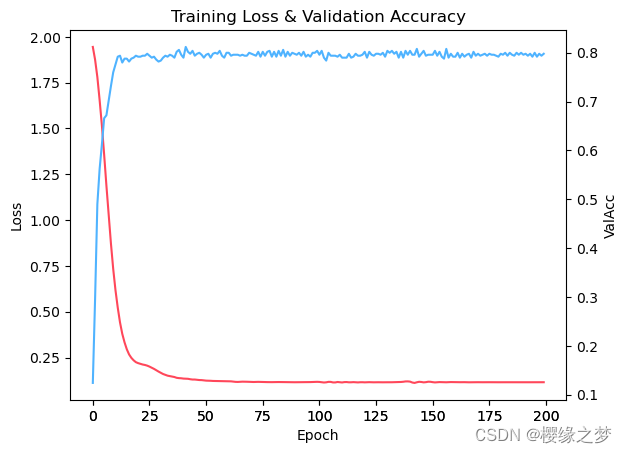
画图
def plot_loss_with_acc(loss_history, val_acc_history):
fig = plt.figure()
# 坐标系ax1画曲线1
ax1 = fig.add_subplot(111) # 指的是将plot界面分成1行1列,此子图占据从左到右从上到下的1位置
ax1.plot(range(len(loss_history)), loss_history,
c=np.array([255, 71, 90]) / 255.) # c为颜色
plt.ylabel('Loss')
# 坐标系ax2画曲线2
ax2 = fig.add_subplot(111, sharex=ax1, frameon=False) # 其本质就是添加坐标系,设置共享ax1的x轴,ax2背景透明
ax2.plot(range(len(val_acc_history)), val_acc_history,
c=np.array([79, 179, 255]) / 255.)
ax2.yaxis.tick_right() # 开启右边的y坐标
ax2.yaxis.set_label_position("right")
plt.ylabel('ValAcc')
plt.xlabel('Epoch')
plt.title('Training Loss & Validation Accuracy')
plt.show()
plot_loss_with_acc(loss, val_acc)
3.2 GraphSAGE
#GraphSAGE
Data = namedtuple('Data', ['x', 'y', 'adjacency',
'train_mask', 'val_mask', 'test_mask'])
class CoraData(object):
filenames = ["ind.cora.{}".format(name) for name in
['x', 'tx', 'allx', 'y', 'ty', 'ally', 'graph', 'test.index']]
def __init__(self, data_root="cora/raw", rebuild=False):
"""Cora数据,包括数据下载,处理,加载等功能
当数据的缓存文件存在时,将使用缓存文件,否则将下载、进行处理,并缓存到磁盘
处理之后的数据可以通过属性 .data 获得,它将返回一个数据对象,包括如下几部分:
* x: 节点的特征,维度为 2708 * 1433,类型为 np.ndarray
* y: 节点的标签,总共包括7个类别,类型为 np.ndarray
* adjacency_dict: 邻接信息,,类型为 dict
* train_mask: 训练集掩码向量,维度为 2708,当节点属于训练集时,相应位置为True,否则False
* val_mask: 验证集掩码向量,维度为 2708,当节点属于验证集时,相应位置为True,否则False
* test_mask: 测试集掩码向量,维度为 2708,当节点属于测试集时,相应位置为True,否则False
Args:
-------
data_root: string, optional
存放数据的目录,原始数据路径: ../data/cora
缓存数据路径: {data_root}/ch7_cached.pkl
rebuild: boolean, optional
是否需要重新构建数据集,当设为True时,如果存在缓存数据也会重建数据
"""
self.data_root = data_root
save_file = osp.join(self.data_root, "ch7_cached.pkl")
if osp.exists(save_file) and not rebuild:
print("Using Cached file: {}".format(save_file))
self._data = pickle.load(open(save_file, "rb"))
else:
self._data = self.process_data()
with open(save_file, "wb") as f:
pickle.dump(self.data, f)
print("Cached file: {}".format(save_file))
@property
def data(self):
"""返回Data数据对象,包括x, y, adjacency, train_mask, val_mask, test_mask"""
return self._data
def process_data(self):
"""
处理数据,得到节点特征和标签,邻接矩阵,训练集、验证集以及测试集
引用自:https://github.com/rusty1s/pytorch_geometric
"""
print("Process data ...")
_, tx, allx, y, ty, ally, graph, test_index = [self.read_data(
osp.join(self.data_root, name)) for name in self.filenames]
train_index = np.arange(y.shape[0])
val_index = np.arange(y.shape[0], y.shape[0] + 500)
sorted_test_index = sorted(test_index)
x = np.concatenate((allx, tx), axis=0)
y = np.concatenate((ally, ty), axis=0).argmax(axis=1)
x[test_index] = x[sorted_test_index]
y[test_index] = y[sorted_test_index]
num_nodes = x.shape[0]
train_mask = np.zeros(num_nodes, dtype=np.bool_)
val_mask = np.zeros(num_nodes, dtype=np.bool_)
test_mask = np.zeros(num_nodes, dtype=np.bool_)
train_mask[train_index] = True
val_mask[val_index] = True
test_mask[test_index] = True
adjacency_dict = graph
print("Node's feature shape: ", x.shape)
print("Node's label shape: ", y.shape)
print("Adjacency's shape: ", len(adjacency_dict))
print("Number of training nodes: ", train_mask.sum())
print("Number of validation nodes: ", val_mask.sum())
print("Number of test nodes: ", test_mask.sum())
return Data(x=x, y=y, adjacency=adjacency_dict,
train_mask=train_mask, val_mask=val_mask, test_mask=test_mask)
@staticmethod
def build_adjacency(adj_dict):
"""根据邻接表创建邻接矩阵"""
edge_index = []
num_nodes = len(adj_dict)
for src, dst in adj_dict.items():
edge_index.extend([src, v] for v in dst)
edge_index.extend([v, src] for v in dst)
# 去除重复的边
edge_index = list(k for k, _ in itertools.groupby(sorted(edge_index)))
edge_index = np.asarray(edge_index)
adjacency = sp.coo_matrix((np.ones(len(edge_index)),
(edge_index[:, 0], edge_index[:, 1])),
shape=(num_nodes, num_nodes), dtype="float32")
return adjacency
@staticmethod
def read_data(path):
"""使用不同的方式读取原始数据以进一步处理"""
name = osp.basename(path)
if name == "ind.cora.test.index":
out = np.genfromtxt(path, dtype="int64")
return out
else:
out = pickle.load(open(path, "rb"), encoding="latin1")
out = out.toarray() if hasattr(out, "toarray") else out
return out
def sampling(src_nodes, sample_num, neighbor_table):
"""根据源节点采样指定数量的邻居节点,注意使用的是有放回的采样;
某个节点的邻居节点数量少于采样数量时,采样结果出现重复的节点
Arguments:
src_nodes {list, ndarray} -- 源节点列表
sample_num {int} -- 需要采样的节点数
neighbor_table {dict} -- 节点到其邻居节点的映射表
Returns:
np.ndarray -- 采样结果构成的列表
"""
results = []
for sid in src_nodes:
# 从节点的邻居中进行有放回地进行采样
# print(neighbor_table,sid,neighbor_table.toarray())
res = np.random.choice(neighbor_table[sid], size=(sample_num, ))
results.append(res)
return np.asarray(results).flatten()
def multihop_sampling(src_nodes, sample_nums, neighbor_table):
"""根据源节点进行多阶采样
Arguments:
src_nodes {list, np.ndarray} -- 源节点id
sample_nums {list of int} -- 每一阶需要采样的个数
neighbor_table {dict} -- 节点到其邻居节点的映射
Returns:
[list of ndarray] -- 每一阶采样的结果
"""
sampling_result = [src_nodes]
for k, hopk_num in enumerate(sample_nums):
hopk_result = sampling(sampling_result[k], hopk_num, neighbor_table)
sampling_result.append(hopk_result)
return sampling_result
class NeighborAggregator(nn.Module):
def __init__(self, input_dim, output_dim,
use_bias=False, aggr_method="mean"):
"""聚合节点邻居
Args:
input_dim: 输入特征的维度
output_dim: 输出特征的维度
use_bias: 是否使用偏置 (default: {False})
aggr_method: 邻居聚合方式 (default: {mean})
"""
super(NeighborAggregator, self).__init__()
self.input_dim = input_dim
self.output_dim = output_dim
self.use_bias = use_bias
self.aggr_method = aggr_method
self.weight = nn.Parameter(torch.Tensor(input_dim, output_dim))
if self.use_bias:
self.bias = nn.Parameter(torch.Tensor(self.output_dim))
self.reset_parameters()
def reset_parameters(self):
init.kaiming_uniform_(self.weight)
if self.use_bias:
init.zeros_(self.bias)
def forward(self, neighbor_feature):
if self.aggr_method == "mean":
aggr_neighbor = neighbor_feature.mean(dim=1)
elif self.aggr_method == "sum":
aggr_neighbor = neighbor_feature.sum(dim=1)
elif self.aggr_method == "max":
aggr_neighbor = neighbor_feature.max(dim=1)
else:
raise ValueError("Unknown aggr type, expected sum, max, or mean, but got {}"
.format(self.aggr_method))
neighbor_hidden = torch.matmul(aggr_neighbor, self.weight)
if self.use_bias:
neighbor_hidden += self.bias
return neighbor_hidden
def extra_repr(self):
return 'in_features={}, out_features={}, aggr_method={}'.format(
self.input_dim, self.output_dim, self.aggr_method)
class SageGCN(nn.Module):
def __init__(self, input_dim, hidden_dim,
activation=F.relu,
aggr_neighbor_method="mean",
aggr_hidden_method="sum"):
"""SageGCN层定义
Args:
input_dim: 输入特征的维度
hidden_dim: 隐层特征的维度,
当aggr_hidden_method=sum, 输出维度为hidden_dim
当aggr_hidden_method=concat, 输出维度为hidden_dim*2
activation: 激活函数
aggr_neighbor_method: 邻居特征聚合方法,["mean", "sum", "max"]
aggr_hidden_method: 节点特征的更新方法,["sum", "concat"]
"""
super(SageGCN, self).__init__()
assert aggr_neighbor_method in ["mean", "sum", "max"]
assert aggr_hidden_method in ["sum", "concat"]
self.input_dim = input_dim
self.hidden_dim = hidden_dim
self.aggr_neighbor_method = aggr_neighbor_method
self.aggr_hidden_method = aggr_hidden_method
self.activation = activation
self.aggregator = NeighborAggregator(input_dim, hidden_dim,
aggr_method=aggr_neighbor_method)
self.weight = nn.Parameter(torch.Tensor(input_dim, hidden_dim))
self.reset_parameters()
def reset_parameters(self):
init.kaiming_uniform_(self.weight)
def forward(self, src_node_features, neighbor_node_features):
neighbor_hidden = self.aggregator(neighbor_node_features)
self_hidden = torch.matmul(src_node_features, self.weight)
if self.aggr_hidden_method == "sum":
hidden = self_hidden + neighbor_hidden
elif self.aggr_hidden_method == "concat":
hidden = torch.cat([self_hidden, neighbor_hidden], dim=1)
else:
raise ValueError("Expected sum or concat, got {}"
.format(self.aggr_hidden))
if self.activation:
return self.activation(hidden)
else:
return hidden
def extra_repr(self):
output_dim = self.hidden_dim if self.aggr_hidden_method == "sum" else self.hidden_dim * 2
return 'in_features={}, out_features={}, aggr_hidden_method={}'.format(
self.input_dim, output_dim, self.aggr_hidden_method)
class GraphSage(nn.Module):
def __init__(self, input_dim, hidden_dim,
num_neighbors_list):
super(GraphSage, self).__init__()
self.input_dim = input_dim
self.hidden_dim = hidden_dim
self.num_neighbors_list = num_neighbors_list
self.num_layers = len(num_neighbors_list)
self.gcn = nn.ModuleList()
self.gcn.append(SageGCN(input_dim, hidden_dim[0]))
for index in range(0, len(hidden_dim) - 2):
self.gcn.append(SageGCN(hidden_dim[index], hidden_dim[index+1]))
self.gcn.append(SageGCN(hidden_dim[-2], hidden_dim[-1], activation=None))
def forward(self, node_features_list):
hidden = node_features_list
for l in range(self.num_layers):
next_hidden = []
gcn = self.gcn[l]
for hop in range(self.num_layers - l):
src_node_features = hidden[hop]
src_node_num = len(src_node_features)
neighbor_node_features = hidden[hop + 1] \
.view((src_node_num, self.num_neighbors_list[hop], -1))
h = gcn(src_node_features, neighbor_node_features)
next_hidden.append(h)
hidden = next_hidden
return hidden[0]
def extra_repr(self):
return 'in_features={}, num_neighbors_list={}'.format(
self.input_dim, self.num_neighbors_list
)
def train():
loss_history = []
val_history = []
model.train()
for e in range(EPOCHS):
for batch in range(NUM_BATCH_PER_EPOCH):
batch_src_index = np.random.choice(train_index, size=(BTACH_SIZE,))
batch_src_label = torch.from_numpy(train_label[batch_src_index]).long().to(device)
# print(batch_src_index,dataset.adjacency)
batch_sampling_result = multihop_sampling(batch_src_index, NUM_NEIGHBORS_LIST, dataset.adjacency)
batch_sampling_x = [torch.from_numpy(x[idx]).float().to(device) for idx in batch_sampling_result]
batch_train_logits = model(batch_sampling_x)
loss = criterion(batch_train_logits, batch_src_label)
optimizer.zero_grad()
loss.backward() # 反向传播计算参数的梯度
#验证集
val_acc,_,_ = test(val_index)
loss_history.append(loss.item())
val_history.append(val_acc.item())
optimizer.step() # 使用优化方法进行梯度更新
print("Epoch {:03d} Batch {:03d} Loss: {:.4f}".format(e, batch, loss.item()))
# test()
return loss_history,val_history
def test(test_index):
model.eval()
with torch.no_grad():
test_sampling_result = multihop_sampling(test_index, NUM_NEIGHBORS_LIST, dataset.adjacency)
test_x = [torch.from_numpy(x[idx]).float().to(device) for idx in test_sampling_result]
test_logits = model(test_x)
test_label = torch.from_numpy(dataset.y[test_index]).long().to(device)
predict_y = test_logits.max(1)[1]
accuarcy = torch.eq(predict_y, test_label).float().mean()
# print("Test Accuracy: ", accuarcy)
return accuarcy,predict_y.cpu().numpy(),test_label.cpu().numpy()
# 超参数定义
INPUT_DIM = 1433 # 输入维度
# Note: 采样的邻居阶数需要与GCN的层数保持一致
HIDDEN_DIM = [128, 7] # 隐藏单元节点数
NUM_NEIGHBORS_LIST = [10, 10] # 每阶采样邻居的节点数
assert len(HIDDEN_DIM) == len(NUM_NEIGHBORS_LIST)
BTACH_SIZE = 16 # 批处理大小
EPOCHS = 20
NUM_BATCH_PER_EPOCH = 20 # 每个epoch循环的批次数
LEARNING_RATE = 0.01 # 学习率
# 模型定义,包括模型实例化、损失函数与优化器定义
device = "cuda" if torch.cuda.is_available() else "cpu"
# model = GraphSage().to(device)
model = GraphSage(input_dim=INPUT_DIM, hidden_dim=HIDDEN_DIM,
num_neighbors_list=NUM_NEIGHBORS_LIST).to(device)
# print(model)
criterion = nn.CrossEntropyLoss().to(device)
optimizer = optim.Adam(model.parameters(), lr=LEARNING_RATE, weight_decay=5e-4)
# 加载数据,并转换为torch.Tensor
dataset = CoraData().data
x = dataset.x / dataset.x.sum(1, keepdims=True) # 归一化数据,使得每一行和为1
tensor_x = torch.from_numpy(x).to(device)
tensor_y = torch.from_numpy(dataset.y).to(device)
train_index = np.where(dataset.train_mask)[0]
train_label = dataset.y
val_index = np.where(dataset.val_mask)[0]
test_index = np.where(dataset.test_mask)[0]
# tensor_train_mask = torch.from_numpy(dataset.train_mask).to(device)
# tensor_val_mask = torch.from_numpy(dataset.val_mask).to(device)
# tensor_test_mask = torch.from_numpy(dataset.test_mask).to(device)
# normalize_adjacency = normalization(dataset.adjacency) # 规范化邻接矩阵
# indices = torch.from_numpy(np.asarray([normalize_adjacency.row,
# normalize_adjacency.col])).long()
# values = torch.from_numpy(normalize_adjacency.data.astype(np.float32))
# tensor_adjacency = torch.sparse.FloatTensor(indices, values,(2708, 2708)).to(device)
loss_history,val_acc = train()
# loss,val_acc = train()
# print(tensor_test_mask)
test_acc,test_logits,test_label = test(test_index)
print("Test accuarcy: ", test_acc.item())评估
def plot_loss_with_acc(loss_history,val_acc_history):
fig = plt.figure()
# 坐标系ax1画曲线1
ax1 = fig.add_subplot(111) # 指的是将plot界面分成1行1列,此子图占据从左到右从上到下的1位置
ax1.plot(range(len(loss_history)), loss_history,
c=np.array([255, 71, 90]) / 255.) # c为颜色
plt.ylabel('Loss')
# 坐标系ax2画曲线2
ax2 = fig.add_subplot(111, sharex=ax1, frameon=False) # 其本质就是添加坐标系,设置共享ax1的x轴,ax2背景透明
ax2.plot(range(len(val_acc_history)), val_acc_history,
c=np.array([79, 179, 255]) / 255.)
ax2.yaxis.tick_right() # 开启右边的y坐标
ax2.yaxis.set_label_position("right")
plt.ylabel('ValAcc')
plt.xlabel('Epoch')
plt.title('Training Loss & Validation Accuracy')
plt.show()
plot_loss_with_acc(loss_history,val_acc)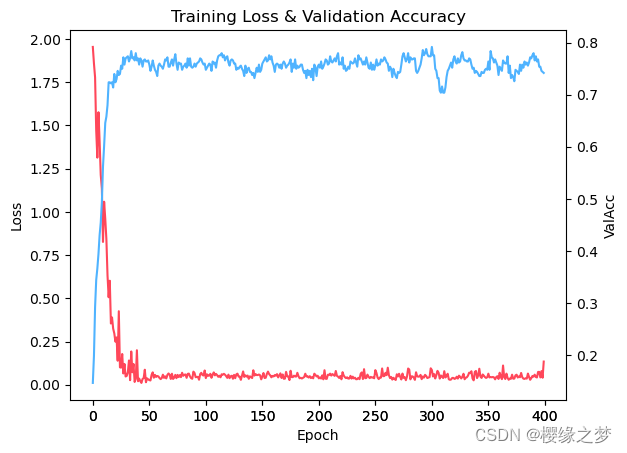
参考:
https://mp.weixin.qq.com/s?src=11×tamp=1715062231&ver=5245&signature=6tzq89bRWFC6uBU*uVU4ESPFrSPSRQbLZ80JQiyok-tW-R8*hAJj9sDpQGG2Mht6ZhqwMjju-EytjBed5KwwDfHs7TEcr-twqEOAQee*Ny4yozAr20Ik8ahW7*d9JuT*&new=1
深入浅出图神经网络:
GNN
原理解析


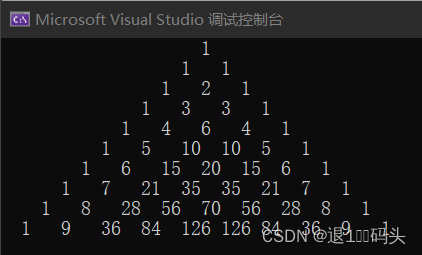

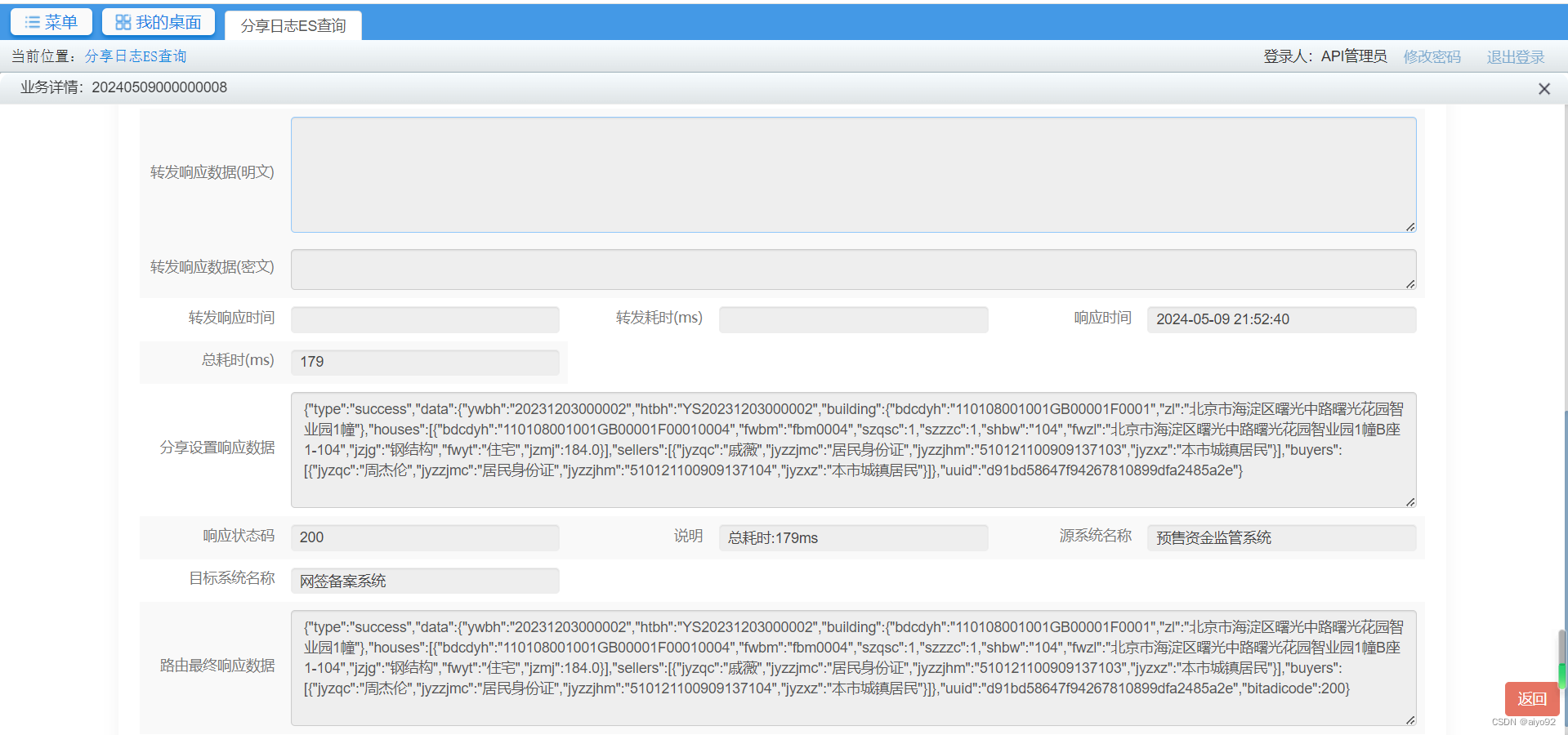



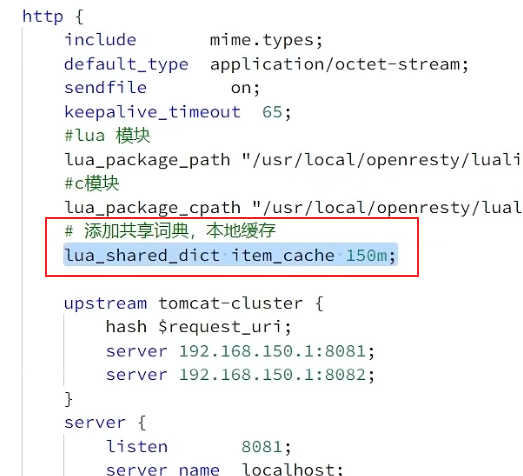



![[MQTT]Mosquitto的內網連接(intranet)和使用者/密碼權限設置](https://img-blog.csdnimg.cn/direct/9e6f7bfeb0aa4b2daa00006679c68b19.png)

